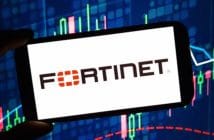
Cybercrime has matured into a highly structured global economy, rivalling legitimate industries in sophistication and profitability. The World Economic Forum projects that cybercrime will cost the global economy $10.5 trillion in 2025, effectively making it one of the largest economies in the world. (1) Ransomware is a key growth driver which has transformed from opportunistic disruption into a calculated financial model to maximise return on investment (ROI) for cybercriminals.
Modern ransomware is now delivered through professionalised networks, unlike early attacks carried out by isolated hackers. Ransomware-as-a-Service (RaaS) lets affiliates purchase toolkits, access dashboards, and even receive customer support, making the barrier to entry minimal for aspiring attackers. This operational model mirrors legitimate Software-as-a-Service (SaaS) businesses, deriving revenues from subscription fees, commissions on successful attacks, and reinvestment into development of new capabilities. It represents a self-sustaining ecosystem where technical expertise, infrastructure, and financial incentives intersect.
Craig Searle, director, consulting and professional services (Pacific) and global leader of cyber advisory, Trustwave, said, “The economic logic of ransomware is clear: extract maximum payment at the lowest possible cost. Attackers no longer rely solely on encryption. Double and triple extortion techniques add new revenue streams by threatening to leak stolen data or target an organisation’s supply chain if payments are not made. These tactics increase pressure on victims, boosting the likelihood of payment while minimising the need for repeat compromise. The result is a scalable model where each compromise offers multiple opportunities for monetisation.
“Australia is particularly exposed to this model due to its relative wealth, high internet penetration, and rapid digital adoption. Local organisations from Medibank to Latitude Financial have experienced the consequences of ransomware’s economic efficiency. These attacks revealed how cyber extortion both damages immediate business operations and generates long-term costs through reputational harm, regulatory scrutiny, and customer attrition. These same factors strengthen negotiating leverage for attackers, as victims weigh the financial burden of payment against uncertain recovery costs.”
Cryptocurrency plays a pivotal role in fuelling ransomware economics. It lends anonymity, liquidity, and global transferability to attackers while undermining traditional financial oversight. Payments are often funnelled through mixing services or converted into stablecoins, obscuring their origin. This creates systemic challenges for regulators, as the flow of ransom payments sustains cybercriminal reinvestment into more advanced infrastructure and exploits. In effect, every payment strengthens the broader ecosystem, incentivising further attacks.
Craig Searle said, “Governments are responding by reshaping the financial dynamics of ransomware through mandatory reporting regimes. Mandatory ransomware and cyber extortion payment reporting came into effect on 30 May 2025 for Australian organisations with an annual turnover above $3 million, as well as critical infrastructure operators, who must now report ransomware or cyber extortion payments within 72 hours. These reports must include details of the payment, method, and communications with attackers, providing government agencies with intelligence to disrupt the business model. Similar frameworks in the United States and United Kingdom demonstrate an international shift towards discouraging ransom payments and constraining the profitability of cyber extortion.
“This regulatory shift highlights a critical economic principle: ransomware thrives because victims pay. Governments aim to reduce the incentive structure that makes cyber extortion lucrative by mandating transparency. The idea is that the cost-benefit equation begins to tilt if attackers believe that payments will be reported, traced, or even blocked. This could erode the financial foundations of ransomware over time, though success depends on consistent global enforcement and the willingness of organisations to resist making payments.”
The cybercrime industry remains resilient despite these efforts. Dark web marketplaces continue to supply ransomware kits, stolen data, and exploit tools, sustaining a vast secondary economy. State-sponsored actors exploit similar methods for espionage, further blurring the line between financially motivated and politically motivated attacks. This convergence reinforces the systemic risk ransomware poses, as economic drivers intersect with national security threats.
Craig Searle said, “Businesses that are primarily the domain of high net worth (HNW) can often be targeted as this provides criminals with access to credentials for people that are more likely to have the means to pay. There is also a higher chance of these businesses having credentials of a celebrity or politician. From the attacker’s perspective, this increases the value of the credentials on the basis that they use them themselves to launch further attacks, or sell the credential sets on the black market.
“Understanding ransomware as an economic system, rather than a technical nuisance, is essential for modern businesses. Security investment should be framed as a way to alter the financial calculus of attackers, not just as a critical defensive measure. Stronger cyber hygiene, multi-factor authentication (MFA), and supply chain risk management reduce the likelihood of compromise, while clear incident response strategies minimise the power criminals can exert. Each measure increases the cost of attack, lowering expected returns for adversaries and weakening the overall market.”
Ransomware at its core is less about technology and more about economics. Attackers operate with a clear business model, driven by profit, efficiency, and reinvestment. Defenders must think in the same terms, focusing on preventing breaches and undermining the financial ecosystem that sustains cyber extortion in equal measure. The introduction of reporting obligations represents a significant step toward shifting these dynamics, though the ultimate solution will require sustained cooperation between governments, businesses, and technology providers.
Craig Searle said, “Ransomware economics will continue to evolve if left unchecked. However, organisations and policymakers can begin to erode its profitability by recognising ransomware as a business and responding accordingly. Reducing cybercrime ROI is the only way to disrupt the cycle and weaken the financial model that has made ransomware one of the most pervasive threats of the digital age.”
Reference:
(1) https://intelligence.weforum.org/topics/a1Gb00000015QG1EAM





